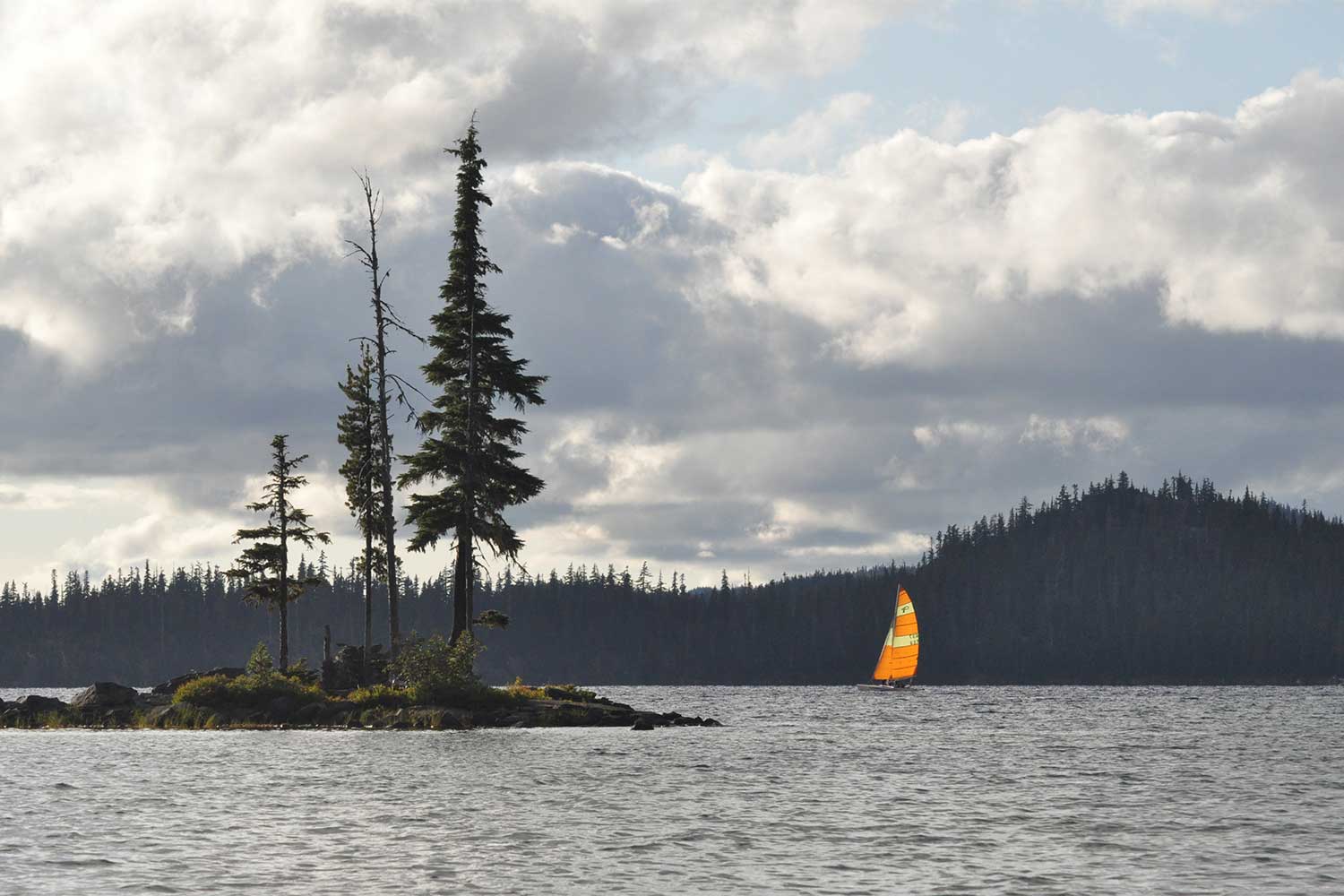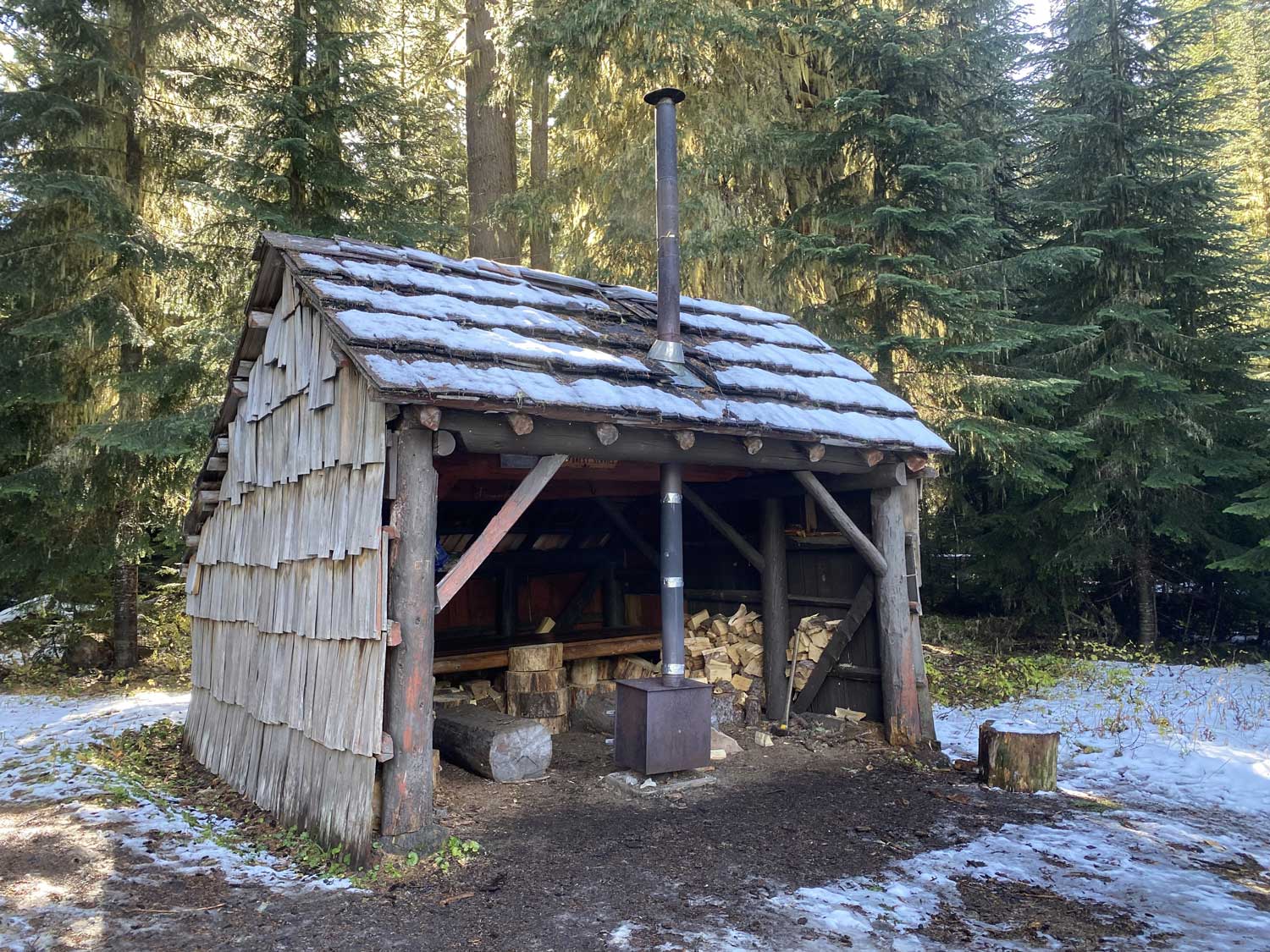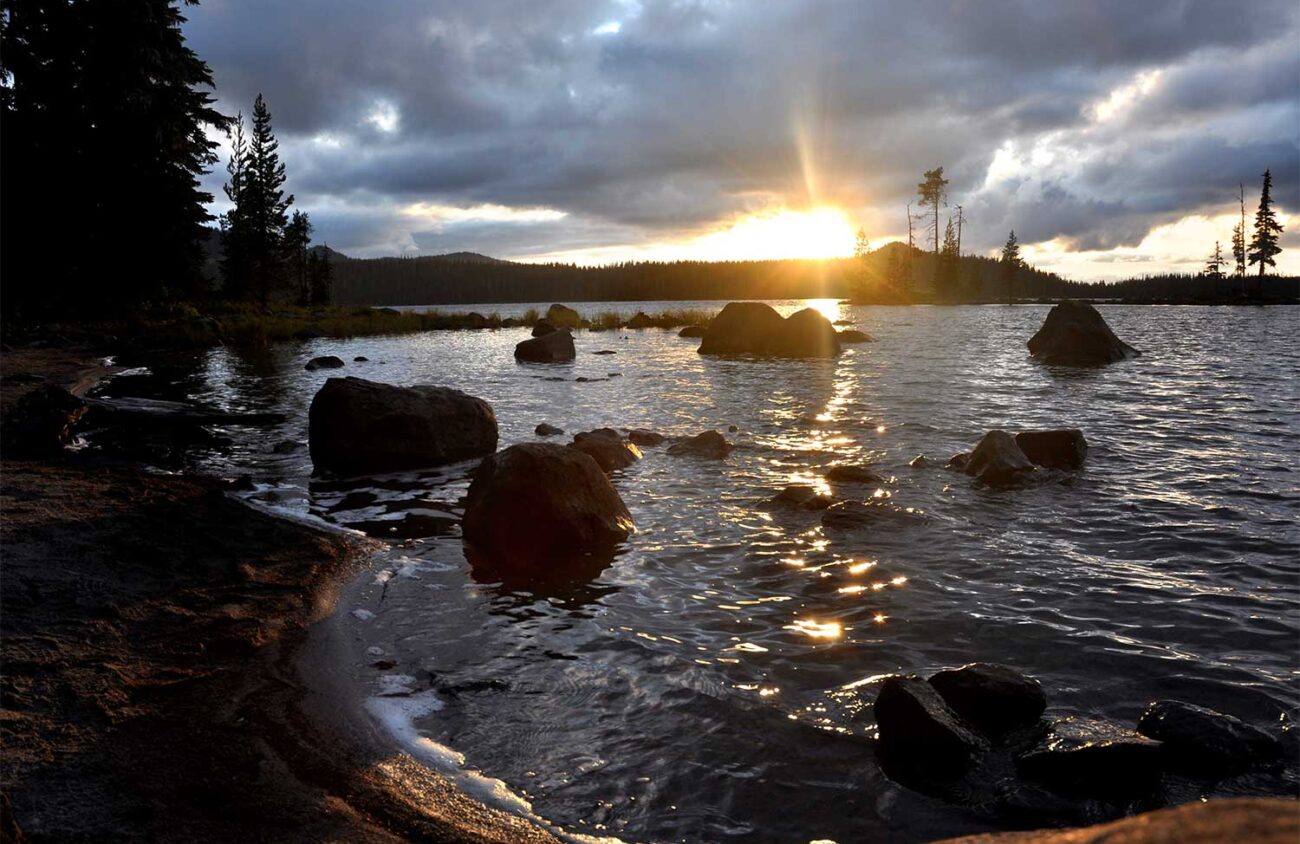The mosquitos at Waldo Lake are finally gone! Now the shore is aflutter with thousands of orange-and-black tortoiseshell butterflies. And ripe huckleberries are everywhere.
Most trailheads at Waldo Lake are still closed, following a forest fire that burned the west and north shores of the mile-high lake in 2022. But that blaze spared the southern shore at Shadow Bay. Park here for an easy 1.7-mile hike along the lakeshore amid butterflies, berries and unburnt trees. The trail leads to a sandy swimming beach and a meadow with a rustic shelter. Mountain bikes, horses and dogs are allowed.
Waldo is one of the few places in the nearby Cascades where you can backpack on the spur of the moment. For overnight stays anywhere in the Three Sisters, Mount Washington and Mount Jefferson Wilderness Areas you have to go online to Recreation.gov a week before your trip in the hope of buying a permit. For day hikes or backpacking at Waldo, all you need is a permit for your car. If you don’t have a Northwest Forest Pass, you can pay $5 at the trailhead.
Oregon’s second largest natural lake, Waldo covers 10 square miles to a depth of up to 417 feet. Despite its size, the lake has no inlet, leaving its waters so pure and clear they are virtually devoid of plant life. Boaters can watch fish swimming 100 feet deep. Kayaks and sailboats are popular on the quiet waters here. Powerboats and float planes are banned.

The lake is named for Judge John B. Waldo of Salem, an early devotee of the Oregon Cascades. Waldo trekked from Willamette Pass to Mount Shasta in 1888, carving his name on trees to blaze what later became the Oregon Skyline Trail — and then the Pacific Crest Trail.
Waldo Lake was briefly converted into a reservoir in 1914, when Danish engineer Simon Klovdahl tried to tap its water for electric power and irrigation. He spent two years blasting a diversion tunnel from Waldo Lake to a valley on the west side. The tunnel worked, but because Waldo Lake has no inlet, the lake merely drained down to the tunnel’s level, and then the flow stopped. It took Waldo Lake 12 years to refill. Klovdahl gave up.
There are fish in Waldo Lake, but not many. The water is so pure that fish have little to eat. For years the U.S. Forest Service tried stocking the lake, dropping trout from airplanes. Many of the fish died on impact. Most of the rest starved. When the Forest Service realized that its dead fish were polluting the lake, it gave up.
Although all the trails in the Waldo Wilderness are technically open, many haven’t been maintained since the fire. The 20.2-mile Jim Weaver Trail around the lake has been cleared, including the route from Shadow Bay to the South Waldo Shelter. Beyond that, expect deadfall, adventure and solitude.
Start by driving Interstate 5 south of Eugene two miles to Oakridge exit 188A. Then follow Willamette Highway 58 east for 59 miles. At milepost 59, (three miles before Willamette Pass), turn left at a “Waldo Lake” pointer. Follow paved, two-lane Road 5897 for 6.5 miles. Then turn left at the Shadow Bay sign for 1.6 miles. Ignore a campground entrance to the right and continue straight 0.3 miles to the boat ramp parking area at road’s end.
Start at a “Shoreline Trail” sign by a dock on the left. The path’s first half mile follows the shore of Shadow Bay, an inlet where sailboats strike romantic poses. At the 1.3-mile mark, reach a sandy beach sheltered by a small wooded island — a nice wading spot on a hot day. After this the trail leaves the lake and skirts a meadow to the shelter (GPS location 43.6788 -122.0559).

The rustic, three-sided shelter is not near the lakeshore, but it makes a good lunch spot and turnaround point. There’s a sleeping bench, a woodstove and a supply of wood. Use it sparingly.
If you have extra energy, hike an extra half mile to a small sandy beach with your first view of South Sister. Here you’ll also be able to see the effects of the 2022 fire. Waldo’s west shore burned lightly, leaving patches of green. The huckleberry bushes in these areas are loving the burn, turning sunlight into fruit.
The far north end of Waldo Lake did not fare so well. That area had already burned in 1996. The recent fire left the north shore as gray as a sand dune. Still, the land is resilient, and even here green will return.
The wilderness at this magical, mile-high lake never gives up.
William L. Sullivan is the author of 27 books, including The Ship in the Ice and the updated 100 Hikes series for Oregon. Learn more at OregonHiking.com.
